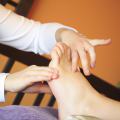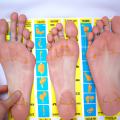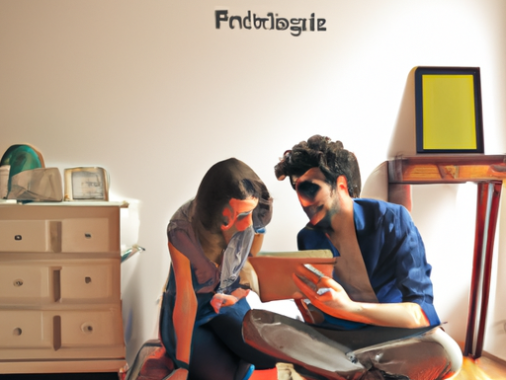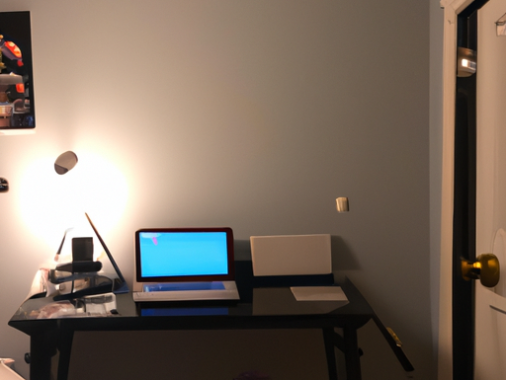-
Table of Contents
- Introduction
- How to Prepare for a Reflexology Session That Involves Taking Off Your Clothes
- The Benefits of Reflexology and Why You Should Consider Taking Off Your Clothes
- Exploring the Different Types of Reflexology and What to Expect When Taking Off Your Clothes
- What to Look for in a Reflexology Practitioner When Taking Off Your Clothes
- How to Make the Most of Your Reflexology Session When Taking Off Your Clothes
- Understanding the Different Reflexology Techniques and What to Expect When Taking Off Your Clothes
- Exploring the Benefits of Reflexology and How Taking Off Your Clothes Can Enhance the Experience
- Q&A
- Conclusion
Introduction
Do you take your clothes off for reflexology? This is a question that many people have when considering reflexology as a form of alternative medicine. Reflexology is a type of massage therapy that focuses on specific areas of the body, such as the feet, hands, and ears. It is believed that by applying pressure to these areas, it can help to reduce stress, improve circulation, and promote relaxation. While reflexology does not require the removal of clothing, some practitioners may suggest that you do so in order to get the most out of the treatment. In this article, we will discuss the benefits of taking your clothes off for reflexology, as well as the potential risks. We will also provide some tips on how to make the most out of your reflexology session.
How to Prepare for a Reflexology Session That Involves Taking Off Your Clothes
Preparing for a reflexology session that involves taking off your clothes can be a daunting task. However, with the right preparation, you can ensure that your session is comfortable and relaxing. Here are some tips to help you prepare for your reflexology session:
1. Wear comfortable clothing: Choose clothing that is loose and comfortable. Avoid wearing tight-fitting clothing or anything that may restrict your movement.
2. Bring a robe or cover-up: Bring a robe or cover-up to wear during the session. This will help you feel more comfortable and relaxed.
3. Bring a pair of socks: It is important to keep your feet warm during the session. Bring a pair of socks to wear during the session.
4. Bring a bottle of water: It is important to stay hydrated during the session. Bring a bottle of water to sip on during the session.
5. Arrive early: Arrive at least 10 minutes before your scheduled appointment. This will give you time to get settled and relax before the session begins.
By following these tips, you can ensure that your reflexology session is comfortable and relaxing. With the right preparation, you can enjoy the benefits of reflexology and feel refreshed and rejuvenated after your session.
The Benefits of Reflexology and Why You Should Consider Taking Off Your Clothes
Reflexology is a form of alternative medicine that involves applying pressure to specific points on the body to promote healing and relaxation. It is based on the belief that certain areas of the body are connected to other parts of the body, and that by stimulating these points, the body can be brought into balance.
The benefits of reflexology are numerous. It can help to reduce stress and anxiety, improve circulation, and promote relaxation. It can also help to reduce pain, improve sleep, and boost the immune system. Additionally, reflexology can help to improve digestion, reduce fatigue, and improve overall well-being.
One of the most important benefits of reflexology is that it can be done without taking off your clothes. This makes it an ideal treatment for those who are uncomfortable with the idea of undressing in front of a practitioner. It also allows for a more private and intimate experience, as the practitioner can focus solely on the reflexology points without worrying about other areas of the body.
Reflexology is a safe and effective form of alternative medicine that can provide numerous benefits. It can be used to reduce stress and anxiety, improve circulation, and promote relaxation. It can also help to reduce pain, improve sleep, and boost the immune system. Additionally, it can be done without taking off your clothes, making it an ideal treatment for those who are uncomfortable with the idea of undressing in front of a practitioner. For these reasons, reflexology is an excellent choice for those looking to improve their overall health and well-being.
Exploring the Different Types of Reflexology and What to Expect When Taking Off Your Clothes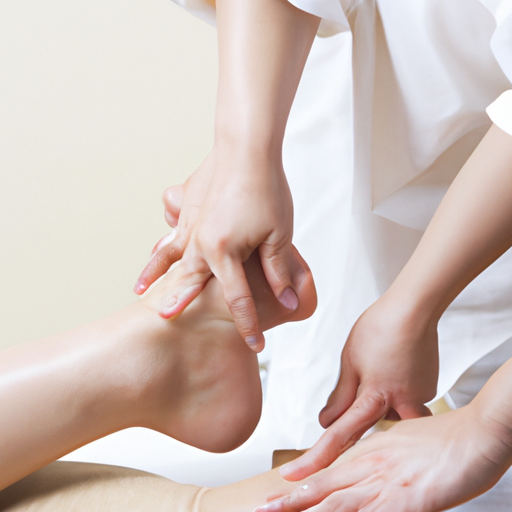
Reflexology is a form of alternative medicine that involves applying pressure to specific points on the body to promote healing and relaxation. It is based on the belief that certain areas of the body are connected to other parts of the body, and that by stimulating these points, the body can be brought into balance.
There are several different types of reflexology, each with its own unique approach. The most common type is foot reflexology, which involves applying pressure to specific points on the feet. Hand reflexology is also popular, and involves applying pressure to specific points on the hands. Facial reflexology is another type of reflexology, which involves applying pressure to specific points on the face.
When taking off your clothes for a reflexology session, it is important to be aware of the type of reflexology being performed. Foot reflexology typically requires the removal of shoes and socks, while hand reflexology may require the removal of jewelry and watches. Facial reflexology may require the removal of makeup and glasses.
Once the clothing has been removed, the reflexologist will begin to apply pressure to the specific points on the body. Depending on the type of reflexology being performed, the pressure may be applied with the fingers, thumbs, or a special tool. The pressure should be firm but gentle, and should not cause any pain or discomfort.
The reflexologist may also use massage techniques to further relax the body and promote healing. This may include kneading, tapping, and stroking of the muscles. The reflexologist may also use essential oils or other aromatherapy products to further enhance the experience.
At the end of the session, the reflexologist will provide advice on how to maintain the benefits of the session. This may include lifestyle changes, such as diet and exercise, as well as advice on how to manage stress.
Reflexology can be a powerful tool for promoting relaxation and healing. By understanding the different types of reflexology and what to expect when taking off your clothes, you can ensure that you get the most out of your session.
What to Look for in a Reflexology Practitioner When Taking Off Your Clothes
When seeking a reflexology practitioner, it is important to ensure that they are qualified and experienced in the practice. Here are some key points to consider when selecting a reflexology practitioner:
1. Certification: Make sure that the practitioner is certified by a recognized reflexology organization. This will ensure that they have the necessary training and experience to provide quality reflexology services.
2. Professionalism: Look for a practitioner who is professional and respectful. They should be able to provide a comfortable and safe environment for you to receive treatment.
3. Hygiene: Ensure that the practitioner follows proper hygiene protocols. This includes wearing gloves, using clean towels, and washing their hands before and after each session.
4. Comfort: Make sure that the practitioner is comfortable with you taking off your clothes. They should be able to provide you with a private area to do so, and should be respectful of your boundaries.
5. Communication: Look for a practitioner who is open to communication and willing to answer any questions you may have. This will help ensure that you are comfortable and confident in the treatment you are receiving.
By following these guidelines, you can ensure that you are selecting a qualified and experienced reflexology practitioner who will provide you with a safe and comfortable experience.
How to Make the Most of Your Reflexology Session When Taking Off Your Clothes
When taking off your clothes for a reflexology session, there are a few steps you can take to ensure that you get the most out of your session.
First, it is important to make sure that you are comfortable. Wear loose-fitting clothing that is easy to take off and put back on. Avoid wearing anything that is too tight or restrictive. If you are feeling cold, you may want to bring a light blanket or wrap to keep you warm during the session.
Second, it is important to take your time when undressing. Take off one piece of clothing at a time and make sure that you are completely comfortable before taking off the next piece. This will help you to relax and get into the right frame of mind for the session.
Third, it is important to keep your modesty in mind. Make sure that you are covered up at all times and that you are not exposing any areas of your body that you are not comfortable with. If you are feeling uncomfortable, you can always ask the reflexologist to provide you with a blanket or sheet to cover up with.
Finally, it is important to communicate with your reflexologist. Let them know if you are feeling uncomfortable or if you need to adjust your position. This will help them to provide you with the best possible experience.
By following these steps, you can ensure that you get the most out of your reflexology session when taking off your clothes. By being comfortable and communicating with your reflexologist, you can ensure that you have a positive and relaxing experience.
Understanding the Different Reflexology Techniques and What to Expect When Taking Off Your Clothes
Reflexology is a form of alternative medicine that involves applying pressure to specific points on the body to promote healing and relaxation. It is based on the belief that certain areas of the body are connected to other parts of the body, and that by stimulating these points, the body can be brought back into balance. There are several different techniques used in reflexology, and each one has its own unique benefits.
The most common technique used in reflexology is the thumb and finger technique. This involves using the thumb and index finger to apply pressure to specific points on the body. This technique is often used to target areas of tension and pain, as well as to stimulate circulation.
Another technique used in reflexology is the knuckle technique. This involves using the knuckles of the hand to apply pressure to specific points on the body. This technique is often used to target areas of tension and pain, as well as to stimulate circulation.
The heel and toe technique is another technique used in reflexology. This involves using the heel and toe of the foot to apply pressure to specific points on the body. This technique is often used to target areas of tension and pain, as well as to stimulate circulation.
The last technique used in reflexology is the rolling technique. This involves using the palms of the hands to roll over specific points on the body. This technique is often used to target areas of tension and pain, as well as to stimulate circulation.
When taking off your clothes for a reflexology session, it is important to be aware that you may be asked to remove all clothing from the waist down. This is done to ensure that the practitioner can access all of the reflex points on the body. It is also important to note that the practitioner may use oil or lotion during the session, so it is important to wear clothing that is comfortable and easy to remove.
Reflexology is a safe and effective form of alternative medicine that can help to promote healing and relaxation. By understanding the different techniques used in reflexology, you can ensure that you get the most out of your session.
Exploring the Benefits of Reflexology and How Taking Off Your Clothes Can Enhance the Experience
Reflexology is a form of alternative medicine that involves applying pressure to specific points on the body to promote relaxation and healing. It is believed that these points correspond to different organs and systems in the body, and that stimulating them can help to reduce stress and improve overall health. While reflexology is often performed with the patient fully clothed, some practitioners believe that taking off your clothes can enhance the experience.
The first benefit of taking off your clothes for a reflexology session is that it allows the practitioner to access the body more easily. Without clothing, the practitioner can more easily identify the points that need to be stimulated and apply the appropriate pressure. This can help to ensure that the session is more effective and that the patient receives the maximum benefit from the treatment.
Another benefit of taking off your clothes is that it can help to create a more relaxed atmosphere. When a patient is fully clothed, they may feel more self-conscious and inhibited, which can make it difficult to relax and get the most out of the session. By removing clothing, the patient can feel more comfortable and at ease, allowing them to focus on the treatment and reap the full benefits.
Finally, taking off your clothes can help to create a more intimate connection between the practitioner and the patient. This can help to foster a sense of trust and understanding between the two, which can further enhance the effectiveness of the treatment.
In conclusion, taking off your clothes for a reflexology session can have a number of benefits. It can allow the practitioner to access the body more easily, create a more relaxed atmosphere, and foster a sense of trust and understanding between the practitioner and the patient. For these reasons, it is worth considering taking off your clothes for a reflexology session if you are looking to get the most out of the experience.
Q&A
1. Is it necessary to take off my clothes for reflexology?
No, it is not necessary to take off your clothes for reflexology. Reflexology is a non-invasive therapy that can be done through clothing.
2. What should I wear for reflexology?
You should wear comfortable clothing that allows you to move freely. Loose-fitting clothing is best.
3. Is reflexology safe?
Yes, reflexology is a safe and non-invasive therapy.
4. Are there any risks associated with reflexology?
No, there are no known risks associated with reflexology.
5. Is reflexology painful?
No, reflexology is not painful. It is a gentle and relaxing therapy.
6. How long does a reflexology session last?
A reflexology session typically lasts between 30 and 60 minutes.
7. What are the benefits of reflexology?
The benefits of reflexology include improved circulation, relaxation, stress relief, and improved overall health.
Conclusion
In conclusion, reflexology is a safe and effective form of massage therapy that can be used to help relieve stress and tension in the body. While it is not necessary to take off your clothes for reflexology, it can be beneficial to do so in order to allow the therapist to access certain areas of the body more easily. Ultimately, the decision to take off your clothes for reflexology is a personal one and should be based on comfort level and the advice of your therapist.
